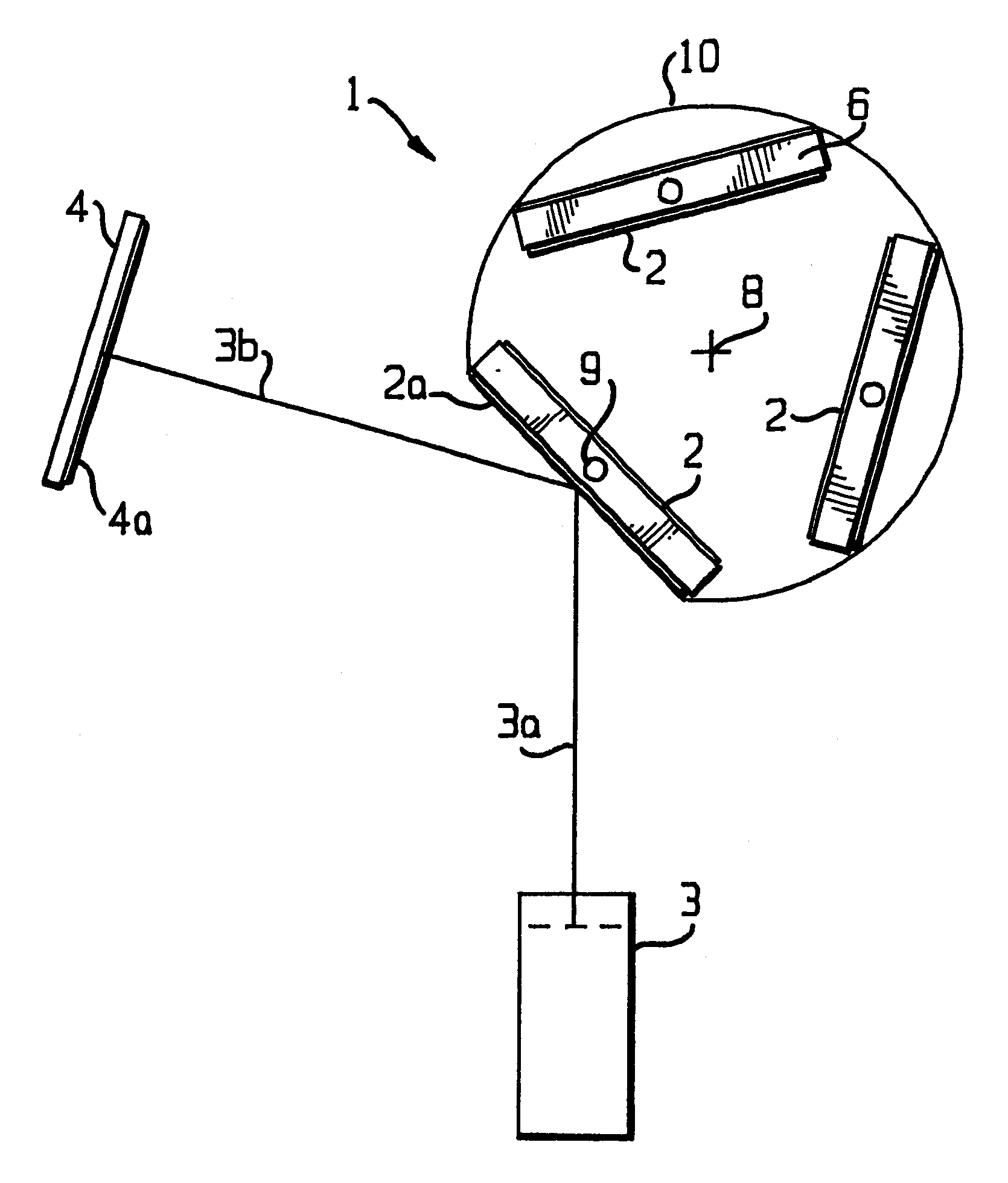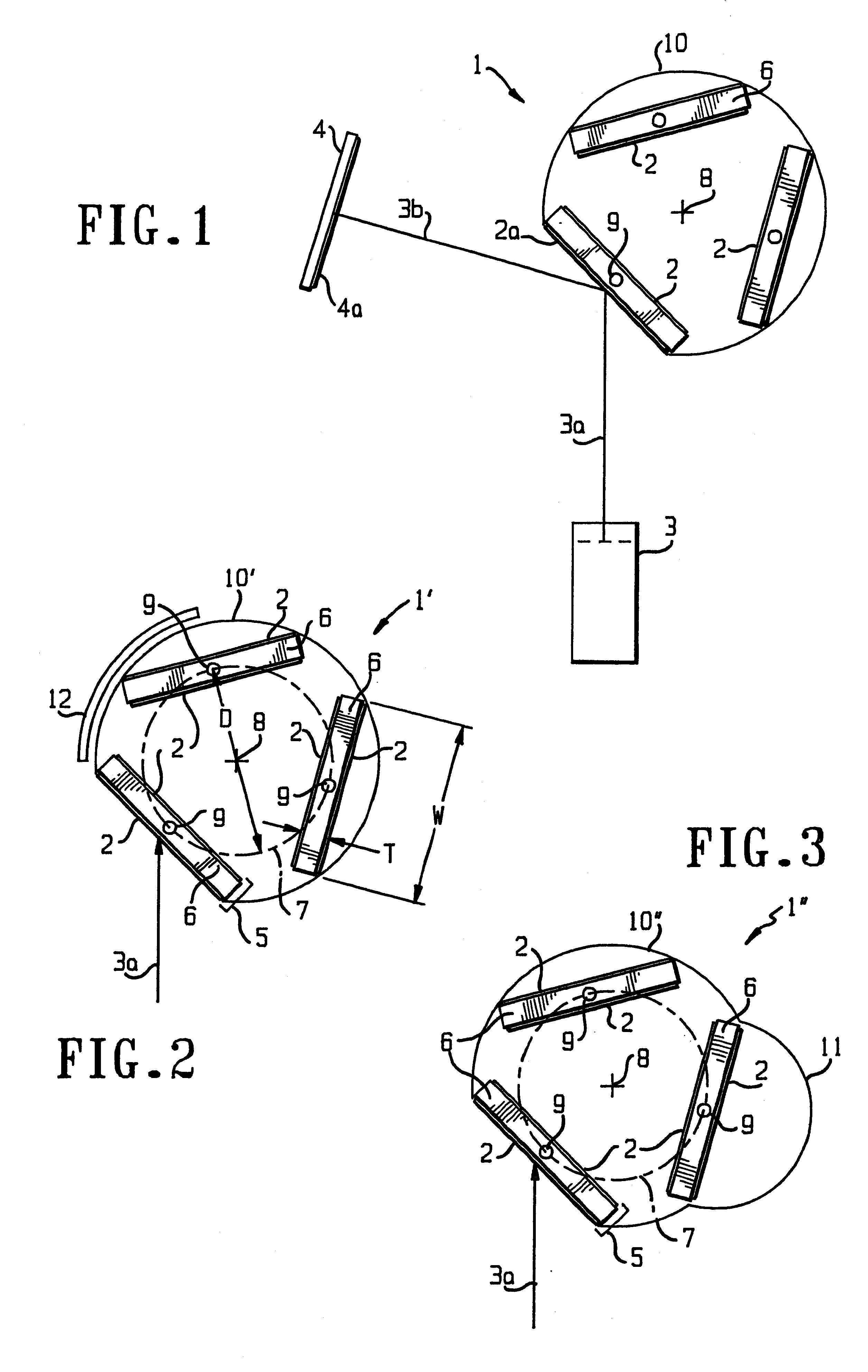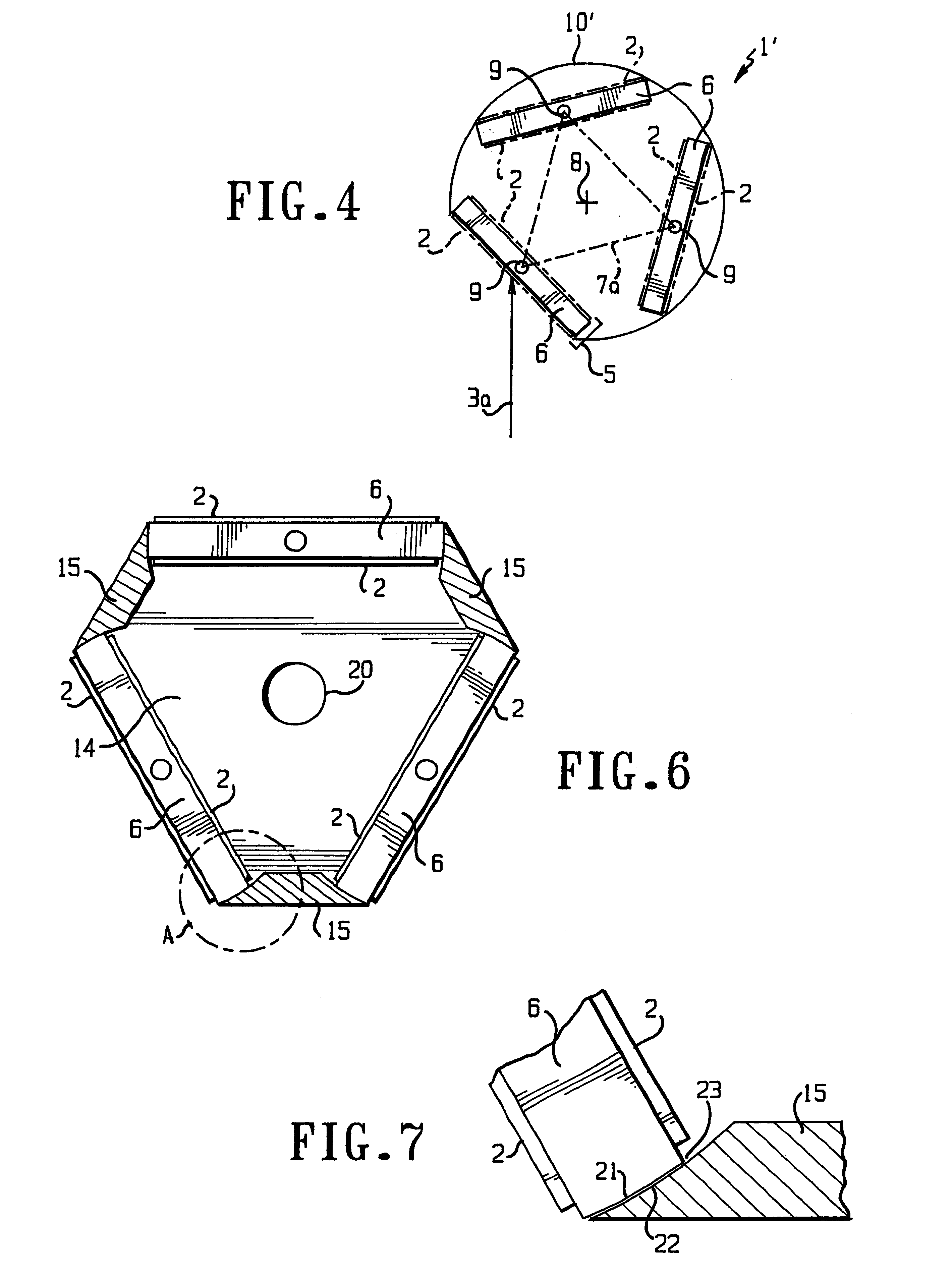Target assembly for ion beam sputter deposition with multiple paddles each having targets on both sides
a target assembly and ion beam technology, applied in the direction of electrolysis components, vacuum evaporation coatings, coatings, etc., can solve the problems of low film deposition rate, increased possibility of contamination of deposited films, poor thickness uniformity of deposited films,
- Summary
- Abstract
- Description
- Claims
- Application Information
AI Technical Summary
Benefits of technology
Problems solved by technology
Method used
Image
Examples
first preferred embodiment
The first preferred embodiment of the ion beam sputtering target assembly 1' having six sputter targets 2 is shown in FIG. 2. The sputter targets 2 are arrayed in pairs 5, and each pair of targets is mounted back-to-back upon a substantially planar target mounting plate or paddle 6. Each of the three paddles 6, with its two targets 2, is disposed upon the circumference of a circular holder or bracket 7, equally spaced. Together, the two planar sputter targets, back-to-back, and the mounting plate form an essentially flat, planar structure a few centimeters in thickness.
The circular holder or bracket 7 supporting those target pairs 5 can be rotated about its axis 8 in such a way as to bring any one of the target pairs 5 to be exposed to the sputtering ion beam 3a so as to deposit a film 4a on a substrate 4 (not shown in FIG. 2). The identity of the target exposed to the sputtering ion beam, within each pair 5 of targets, is selected by a rotation about the axis 9 of the paddle 6 hold...
second preferred embodiment
FIG. 3 shows an assembly 1" according to a second preferred embodiment of the present invention. The second preferred embodiment will be described primarily in terms of its differences from the first preferred embodiment. Features disclosed above for the first preferred embodiment, including any modifications and particularly including the modification shown in FIG. 4, can be incorporated into the second preferred embodiment.
The protective shield 10" enclosing the target assembly 1" is enlarged at a region 11 to allow one of the target paddles 6 to be rotated about its axis 9 while at one of the inactive, non-sputtering rotary positions. Therefore, whichever of the two targets 2 on a paddle 6 is rotated to face outward (away from axis 8) while the paddle is in region 11 will face the sputtering ion beam when its paddle is moved to the active position and will thus serve as the desired target 2a. The second preferred embodiment can be desirable if, for example, a physical obstruction...
working examples
The following examples are provided to illustrate the manner in which the present invention is used. These examples are illustrative and not limiting.
PUM
| Property | Measurement | Unit |
|---|---|---|
| thickness | aaaaa | aaaaa |
| diameter | aaaaa | aaaaa |
| thickness | aaaaa | aaaaa |
Abstract
Description
Claims
Application Information
 Login to View More
Login to View More - R&D
- Intellectual Property
- Life Sciences
- Materials
- Tech Scout
- Unparalleled Data Quality
- Higher Quality Content
- 60% Fewer Hallucinations
Browse by: Latest US Patents, China's latest patents, Technical Efficacy Thesaurus, Application Domain, Technology Topic, Popular Technical Reports.
© 2025 PatSnap. All rights reserved.Legal|Privacy policy|Modern Slavery Act Transparency Statement|Sitemap|About US| Contact US: help@patsnap.com



